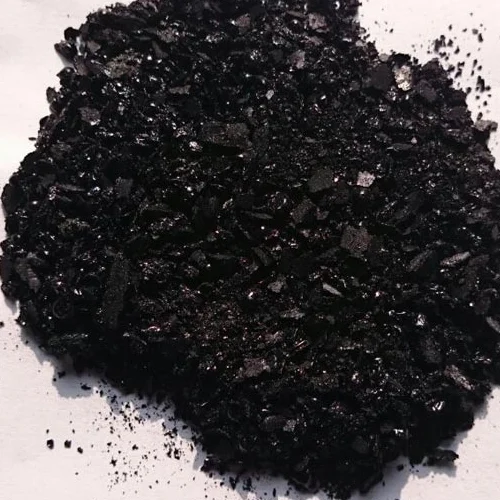how to dye with indigo indigo blue powder
Indigo can dye all natural fibres. It gives beautiful shades of blue — from the palest summer sky to an almost purple black. The colour achieved depends on the type of vat, the concentration of indigo, and the number of dips.
Indigotin (the dye component of indigo powder) is insoluble in water. To use it for dyeing it must be reduced to a water-soluble form. All indigo vats need three things: 1) Indigo 2) A reducing agent 3) A Base.
INDIGO
We recommend natural indigo extract in powdered form. Natural indigo generally contains anywhere from 15% to 55% indigotin by weight depending on the crop, growing season and harvest. Maiwa’s natural indigo generally tests at between 40 and 45% indigotin. In a well maintained vat, 15 grams of indigo will dye approximately 450 g (1 pound) of fibre a dark blue. It will dye 900 g (2 pounds) of fibre a medium blue.
A REDUCING AGENT
Chemically, we need to reduce the indigo to make it soluble — we do this with a reducing agent.
Reducing agents can be sugars, some natural dyes or other plants, or chemicals. A reducing agent lowers the oxidation state of the indigo molecule, transforming indigotin into leuco-indigo — which is soluble in water at room temperature. If we just add powdered indigo to water it will remain in pigment form, suspended but not dissolved.
What is the difference between a suspension and a solution? A fish is suspended in the ocean. But salt is dissolved in the ocean. You can see the fish (which remains distinct) you cannot see the salt (which has dissolved). If we can see the indigo (the dye bath is blue inside) then the indigo is not dissolved and the dye bath cannot be used to for dyeing. When the indigo is reduced it dissolves and the dye bath is a greeny-yellow colour.
A BASE
In order for the reducing agent to act on the indigo, a basic environment is required. Chemically speaking, a base is the opposite of an acid. The reduction of indigo requires a basic (alkaline) solution. A recommended base for an indigo vat is calx (calcium hydroxide) also known as lime, pickling lime, or hydrated lime. Do not confuse it with “quick lime” (calcium oxide) which is much more corrosive, or chalk (calcium carbonate) which is too mild a base for an indigo vat. Maiwa sells a high grade calx, perfect for making a vat. Soda ash or lye are alternatives to calx. Lye is a strong base and should be treated with caution. Soda ash is less caustic than lye and is a good alternative but it takes longer.
HEALTH & SAFETY
The following guidelines will help ensure that dyeing is a fun, enjoyable activity. Wear a mask when working with powders such as calx, lye, or indigo. Gloves are recommended for dyeing as the indigo vat is highly alkaline. Some of these recipes suggest the use of lye which is very caustic and can cause burns to exposed skin. Lye should be treated as a hazardous substance. The casual use of lye in the home studio is not recommended. When mixing powders and water always add the powder to the water. Never add water to a measure of powder. Keep pots and utensils used for dyeing completely separate from items used for cooking. Clearly label all containers and substances. Store dyes and chemicals separately and away from foods. Hazardous substances such as lye should be in a locked cabinet. Be mindful of pets and children.
THE INDIGO VAT
When the indigo is dissolved, the dye bath is a greeny-yellow colour. On the top of the vat, air oxidizes the indigo, resulting in blue indigo pigment. Resting on the bottom of the vat is the sediment consisting of any undissolved indigo, reducing agent or base.
HOW TO DYE WITH INDIGO
1) Scour the cloth or yarn.
2) Build your vat.
3) Dip the cloth or yarn.
4) Oxidize the cloth or yarn.
5) Final wash of the cloth or yarn.
1) SCOUR THE CLOTH OR YARN
Proper scouring is absolutely essential to good dyeing. Improperly scoured items do not dye level, the dye does not penetrate well and the dyed item will have poor rub fastness. The difference between scoured and not scoured can be dramatic.
-
The Timeless Art of Denim Indigo Dye
NewsJul.01,2025
-
The Rise of Sulfur Dyed Denim
NewsJul.01,2025
-
The Rich Revival of the Best Indigo Dye
NewsJul.01,2025
-
The Enduring Strength of Sulphur Black
NewsJul.01,2025
-
The Ancient Art of Chinese Indigo Dye
NewsJul.01,2025
-
Industry Power of Indigo
NewsJul.01,2025
-
Black Sulfur is Leading the Next Wave
NewsJul.01,2025

Sulphur Black
1.Name: sulphur black; Sulfur Black; Sulphur Black 1;
2.Structure formula:
3.Molecule formula: C6H4N2O5
4.CAS No.: 1326-82-5
5.HS code: 32041911
6.Product specification:Appearance:black phosphorus flakes; black liquid

Bromo Indigo; Vat Bromo-Indigo; C.I.Vat Blue 5
1.Name: Bromo indigo; Vat bromo-indigo; C.I.Vat blue 5;
2.Structure formula:
3.Molecule formula: C16H6Br4N2O2
4.CAS No.: 2475-31-2
5.HS code: 3204151000 6.Major usage and instruction: Be mainly used to dye cotton fabrics.

Indigo Blue Vat Blue
1.Name: indigo blue,vat blue 1,
2.Structure formula:
3.Molecule formula: C16H10N2O2
4.. CAS No.: 482-89-3
5.Molecule weight: 262.62
6.HS code: 3204151000
7.Major usage and instruction: Be mainly used to dye cotton fabrics.


